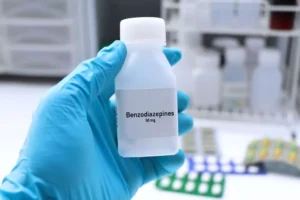
Cognitive behavioral therapy did not perform better than another evidence-based modality (eg, motivational enhancement therapy, contingency management) in this context or as an add-on to combined usual care and pharmacotherapy. These findings suggest that best practices in addiction treatment should include pharmacotherapy plus CBT or another evidence-based therapy, rather than usual clinical management or nonspecific counseling services. Cognitive behavioral therapy (CBT) for substance use disorders has demonstrated efficacy as both a monotherapy and as part of combination treatment strategies. This article provides a review of the evidence supporting the use of CBT, clinical elements of its application, novel treatment strategies for improving treatment response, and dissemination efforts. Although CBT for substance abuse is characterized by heterogeneous treatment elements—such as operant learning strategies, cognitive and motivational elements, and skills building interventions—across protocols several core elements emerge that focus on overcoming the powerfully reinforcing effects of psychoactive substances. Behavioral, cognitive, and cognitive-behavioral treatments all rely heavilyon an awareness of the antecedents and consequences of substance abuse.
Modularization and evaluation of effective components
Common elements of behavioral treatments based on theories ofoperant learning include contingency management, behavior contracting, communityreinforcement, and behavioral self-control training. The following sectionsdescribe some of the elements used in brief behavioral therapies based on theoperant learning model. Platforms for delivering addiction interventions via technology are diverse and multiplying rapidly.

Evaluating practices using hierarchy of evidence models
More recently, it also has been shown to be effective with cocaine abusers who are concurrently alcoholic [93,94]. Psychodynamic supportive–expressive psychotherapy (SE) as developed by Luborsky et al [89] focuses on substance use within the context of the person and interpersonal relationship difficulties. SE has been found to be an effective intervention for opiate use disorders, especially when delivered by skilled therapists [90] and in controlled settings such as methadone maintenance. Disulfiram inhibits aldehyde dehydrogenase, and results in an aversive metabolic response to alcohol. In systematic reviews of controlled trials [26,27], the outcomes for disulfiram were ascertained to be inconclusive, including in a double-blind placebo treatment study of 605 subjects. Type of administration (direct observation), psychological deterrent factors, and physician and patient choice account for the continued positive use of disulfiram [25].
- Annis and Davis use graduated homeworkassignments to help in this process (Annis and Davis, 1988b).
- Furthermore, the authors’ approach will not address therapies and EBPs for acute withdrawal symptoms; rather the authors will focus on treatments for adult substance users [19].
- The Verified badge on our articles is a trusted sign of the most comprehensive scientifically-based medical content.If you have any concern that our content is inaccurate or it should be updated, please let our team know at [email protected].
Cognitive-Behavioral Therapy for Substance Use Disorders
- It is helpfulto have very concrete emergency plans, including the phone numbers ofindividuals supportive of the client’s recovery process.
- One issue that affects treatment evaluation of residential rehabilitation programs is that treatment dropout is common.
- Evidence on effectiveness of psychosocial interventions in substance use disorders is available.
- For outcomes of interest, biological assay/frequency measures and quantity measures are considered primary, and when available both are reported in Tables 1 and 2.
Also, CBTgenerally does not incorporate contingency management approaches such as the useof vouchers to reinforce desired behaviors. CBT is usually confined to thetreatment session (although therapists often give homework to clients to becompleted outside the therapy session), whereas the community reinforcementapproach stresses the importance of incorporating interventions into real worldsettings and taking advantage of community resources. Figure4-18lists a number of features thought to beunique to cognitive-behavioral interventions.
Is Therapy Enough to Treat Substance Use Disorders?
These techniques canbe conducted successfully in individual, group, and family settings, amongothers, to help clients change their substance abuse behaviors. First, our results suggest that prescribing clinicians should favor CBT over usual clinical management to ensure optimal clinical outcomes for addiction, in the context of pharmacotherapy. This conclusion is based in our comparison of CBT plus pharmacotherapy vs usual care plus pharmacotherapy. Second, CBT is not superior to other evidence-based behavioral treatments for addiction, yet in the context of its superiority to usual care, our findings suggest that clinicians should favor an evidence-based behavioral therapy, CBT or otherwise, in conjunction with pharmacological treatment.
Individual and Group Treatments
A literature review was undertaken using several electronic databases (PubMed, Cochrane Database of systemic reviews and specific journals, which pertain to psychosocial issues in addictive disorders and guidelines on this topic). The evidence base cited consists of findings from either individual studies or meta-analyses of studies that largely were randomized controlled trials (RCT) in which individuals exposed to these psychosocial interventions had significantly better substance use outcomes either at the end of the treatment phase or at follow-up. Consensus exists that several psychosocial treatments or interventions for substance use disorders are cbt interventions for substance abuse “evidence-based.” These include cognitive-behavioral therapy (CBT) (including relapse prevention (RP)), contingency management (CM), motivational enhancement/motivational interviewing (MI) and brief interventions (BIs) for alcohol and tobacco. We will then focus on Stage 3 and 4 issues, reviewing the status of dissemination of CBT in clinical practice, highlighting challenges to dissemination and the promise of technology-based approaches to address the ‘implementation cliff’ (Weisz, Ng, & Bearman, 2014). Finally, we speculate how CBT may evolve during the next 30 years, if informed by developments in technology, cognitive science and neuroscience.

In other words, the goal was to avoid combining apples and oranges,76 which is a common criticism against meta-analysis. Although we consider our subgroup approach a strength, some effect size estimates were composed of a small number of primary studies, and this may result in underpowered analyses. Second, there may be some concern about fidelity and other sources of variability in what constituted this sample of CBT interventions, given that a range of manual implementations https://ecosoberhouse.com/ were reviewed. Unfortunately, fidelity to behavioral intervention protocol is often poorly reported in the clinical trial literature77 and could not be consistently measured for the present study. Similarly, this meta-analysis did not account for medication compliance or dose as a potential source of variability. Finally, study results should be considered in the context of what constitutes an optimal outcome in clinical research with adult AUD/SUD.
Benefits Of Cognitive Behavioral Therapy

Three and six-month follow-up indicated significant reductions in drinking outcomes, but no significant differences between conditions (PDA at 3 months follow up was 73.3 for OA+SR compared with 71.2 for SR only). Relapse prevention also stresses the importance of preparing for thepossibility of a relapse and planning ways to avoid it or, failing this,stop the process quickly and with minimal harm when it does occur. Having a drill and being prepared for a fire does notnecessarily mean that a fire will occur. It is helpfulto have very concrete emergency plans, including the phone numbers ofindividuals supportive of the client’s recovery process.
